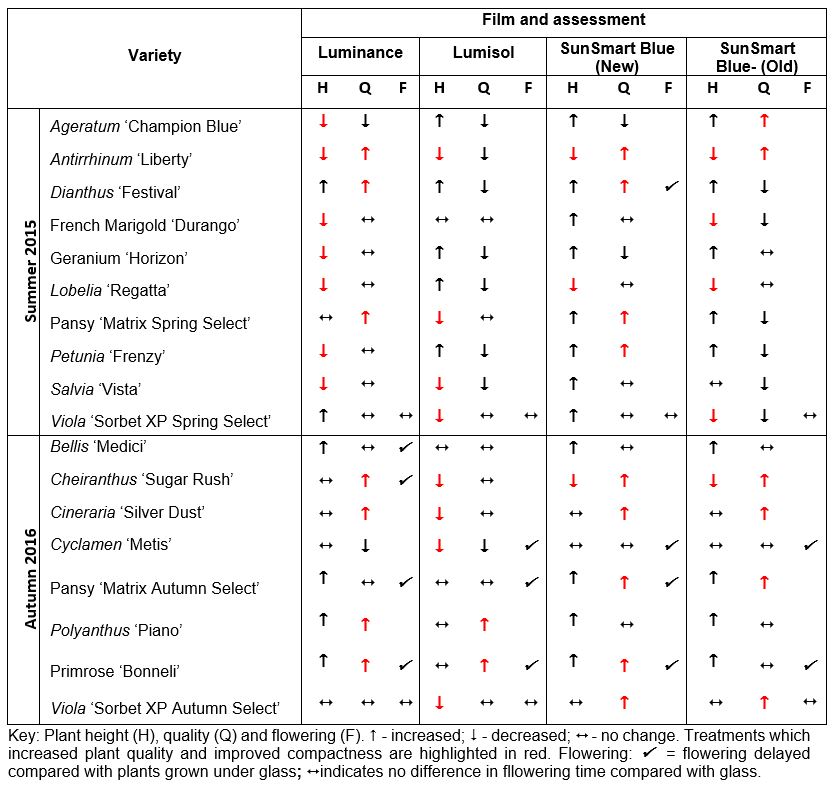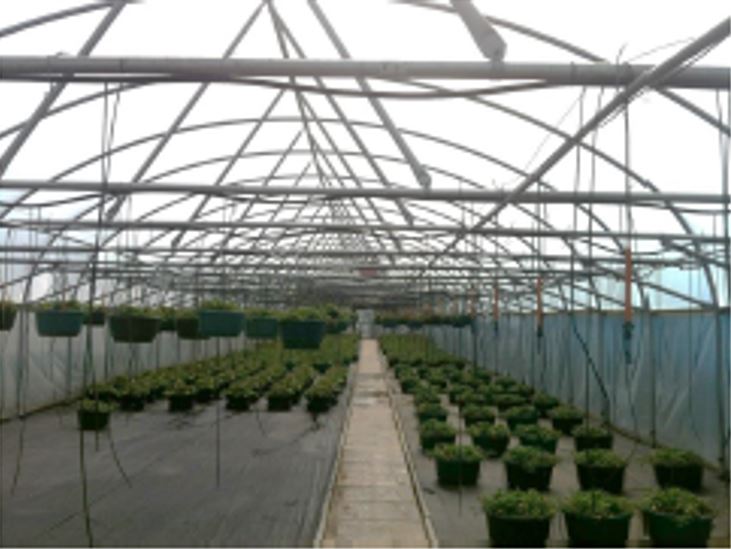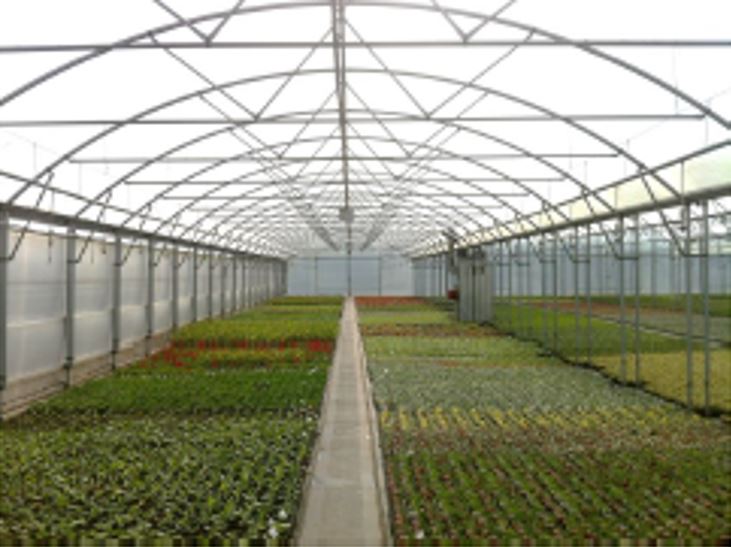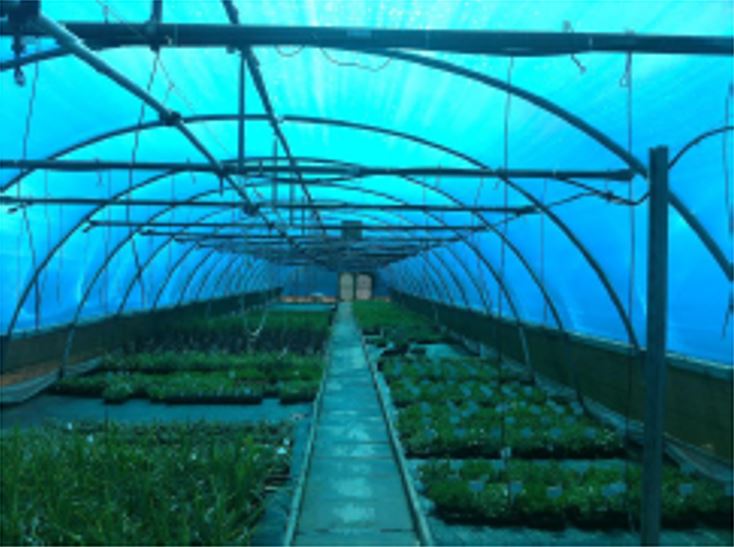Please click here to access the main AHDB website and other sectors.
- Home
- Knowledge library
- The use of spectral filter polythene in bedding plant production
The use of spectral filter polythene in bedding plant production
A range of polythene films are available to growers, capable of manipulating the light quality reaching the crop beneath, influencing such parameters as plant growth, flowering and quality, and pest and disease incidence.
Plant architecture can be influenced by light quality, with stem elongation limited by an increased red:far red light ratio; plant height is also influenced by temperature as the growth rate is slower in plants grown in cooler environments under films that reflect light at the red end of the light spectrum. Light diffusing films such as Luminance can give the benefit of diffuse light on crops without the costs involved in the use of diffuse glass. If these films are combined with modern high specification vented polythene structures, crops can benefit from diffuse light and low stress conditions in both summer and winter, albeit at a cost similar to a basic glasshouse structure.
Bedding and Pot Plant Centre research
Trials were carried out as part of the Bedding and Pot Plant Centre work programme during the summer of 2015 and autumn 2016 to demonstrate the potential benefits and drawbacks of a number of polythene films with spectral filter properties to help inform decision making.
This work demonstrated a number of points for consideration:
- Plants respond differently to light quality, between species and even varieties. Close monitoring will determine the most appropriate varieties for each situation.
- SunSmart Blue film can be used to hold plants back until marketing.
- Light diffusing films such as Luminance and Lumisol can be used to improve plant habit.
Observations on the effect of spectral films on plant growth and development
Plant height: Differences in plant height within species tend to be more pronounced in the spring than the autumn. Plant growth was most effectively controlled by the light diffusing films, Luminance and Lumisol during the spring; and by Lumisol during the autumn.
Plant quality: Plant quality was generally commercially acceptable under all treatments, although there were observable differences. In the spring trial, Salvia ‘Vista’ was affected by scorch under the Lumisol film (but not the Luminance). In the autumn trial, Pansy ‘Matrix’ and Cyclamen ‘Metis’ were generally uneven, particularly under the Luminance and Lumisol films.
Flowering: Although variable across the species, flowering was generally advanced under the Luminance film compared with the Lumisol. None of the films affected flowering time in Viola ‘Sorbet XP’, which was the earliest species to flower in all treatments. The SunSmart Blue delayed flowering for most species, with plants producing fewer flowers than those under the other films.


Luminance

Lumisol

SmartBlue
Other notes in this series:
Forcing herbaceous perennials for early spring sales
Management of bought-in cutting material to retain quality
New plant growth regulators for use on pot- and pack-grown bedding plants
New plant growth regulators for use on poinsettia
The use of spectral filter glass coatings in the production of protected ornamentals
Have a question? Ask the team ...

Sectors:

